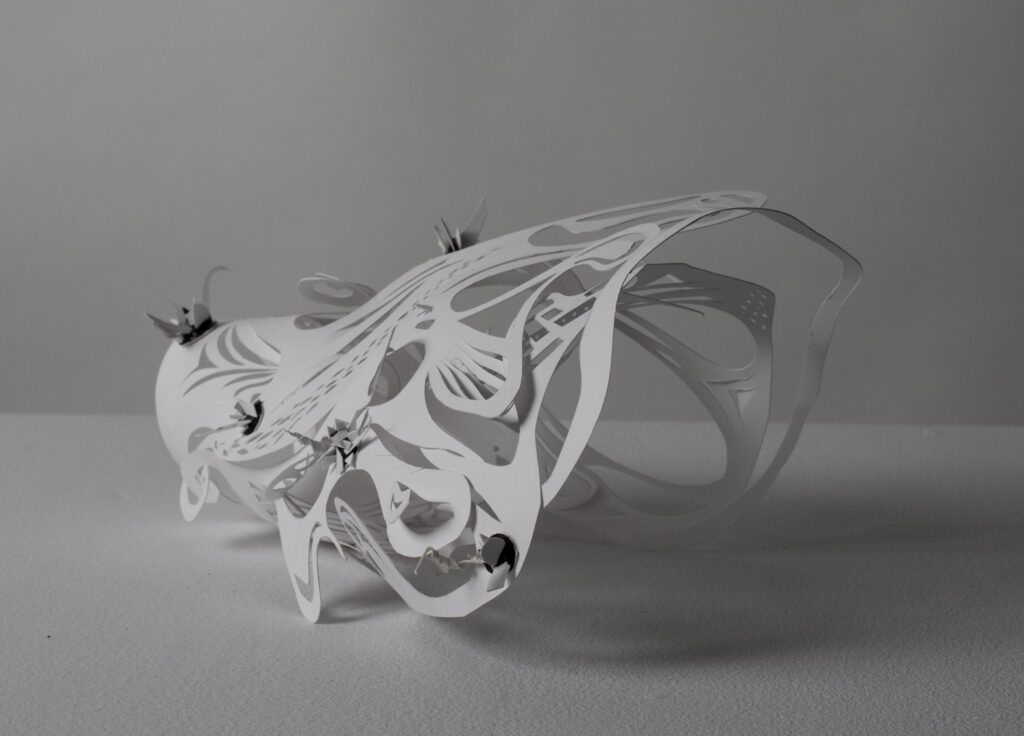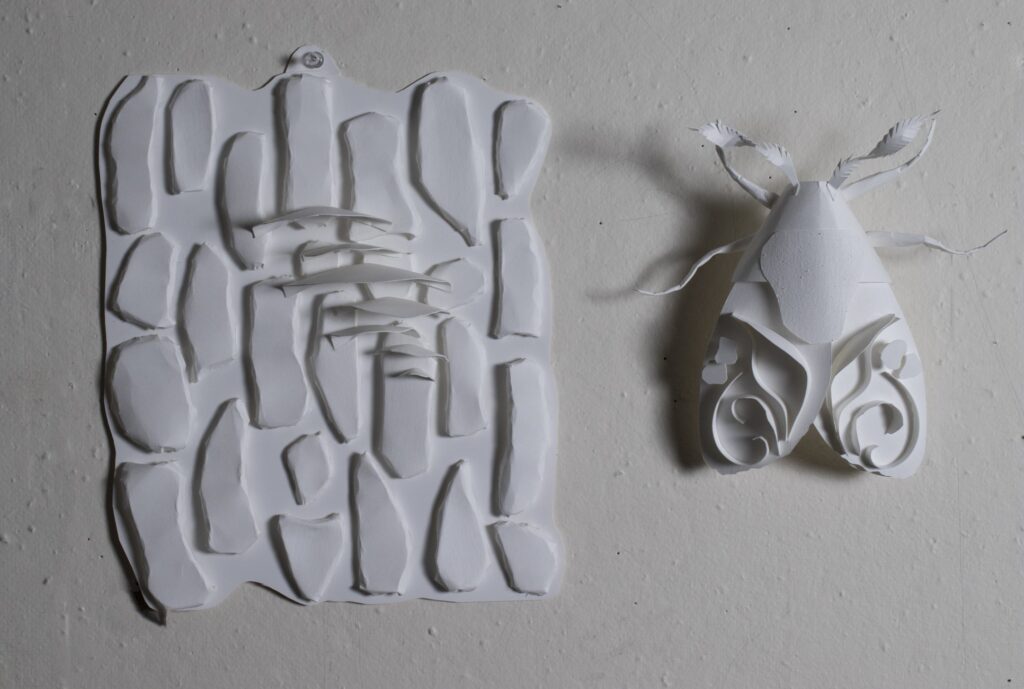Biology
Johnston, Ri
 Root Ball
Root Ball
Fall 2022
Bristol, super glue, and black acrylic paint
Caudiciform plants (“fat plants”) are defined by a large, bulbous root structure designed to retain water and nutrition in harsh environments like deserts. There are several examples of these in the plant house, whose stems seem to bubble up from the surface like magma, and some provide a surface for mosses and small clovers to proliferate. I took inspiration from having a form that, from afar, appears relatively simple but which, upon closer inspection, is incredibly complex. In creating this piece, I made details that would work together differently depending on the viewing angle.

Mothra’s humble origins
Fall 2022
Bristol and super glue
Witch Hazel is a unique plant in that it flowers in the fall rather than the spring or summer. This fact presents a challenge for the plant, for many common culprits of flower pollination are no longer active during the fall months. This raises a question that has puzzled scientists for years: how is Witch Hazel pollinated? It turns out that several species of moths known as sallows are adapted to stay warm and active through the autumn by shivering and thus act as the primary pollinators of Witch Hazel. This was, to me, a fascinating niche to fill, and I took inspiration from the morphology of sallow moths and the oak trees they call home. The left panel depicts the partitioned bark of the oak tree laden with bracket fungus, a beautiful harbinger of the fall season.